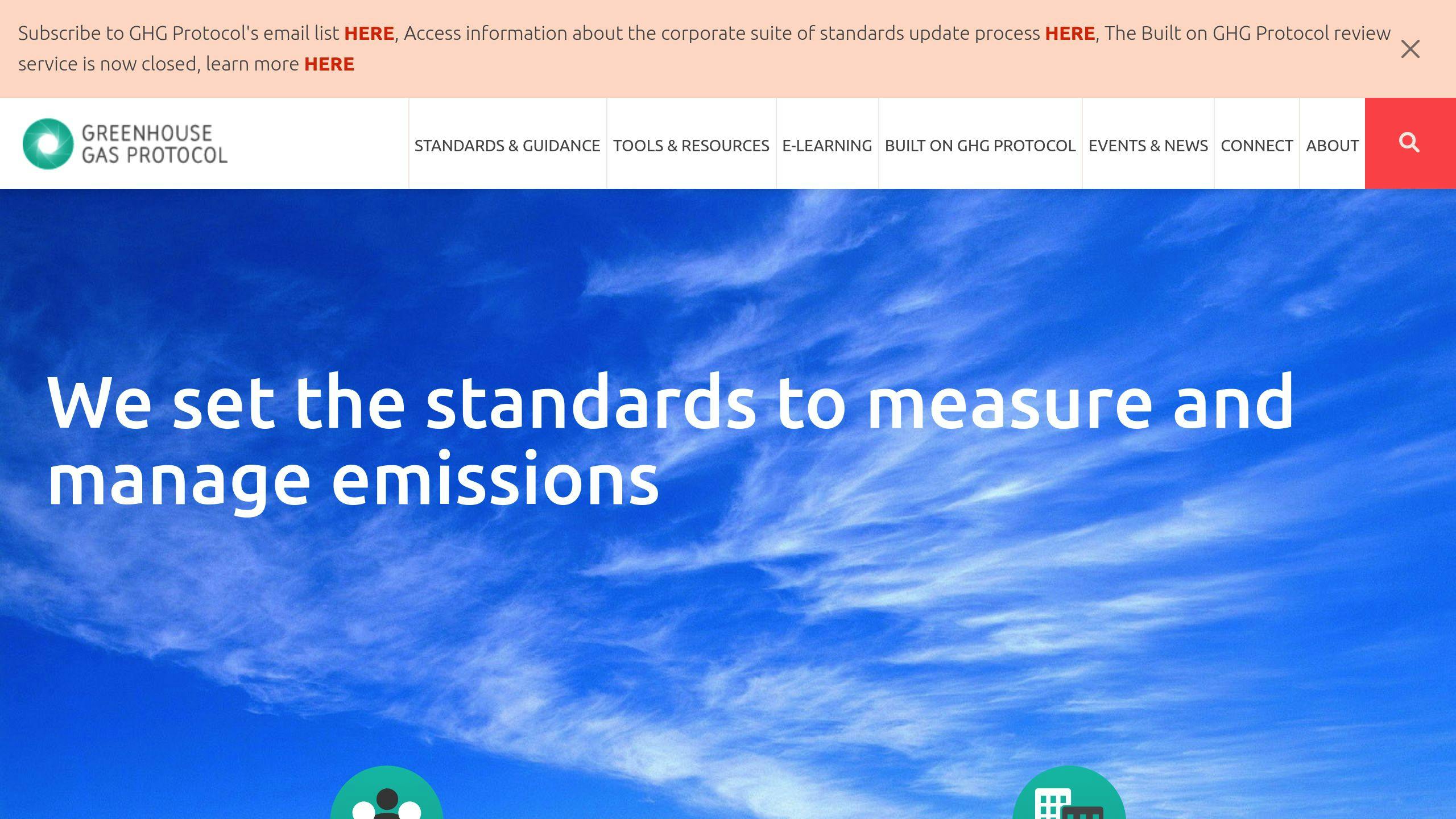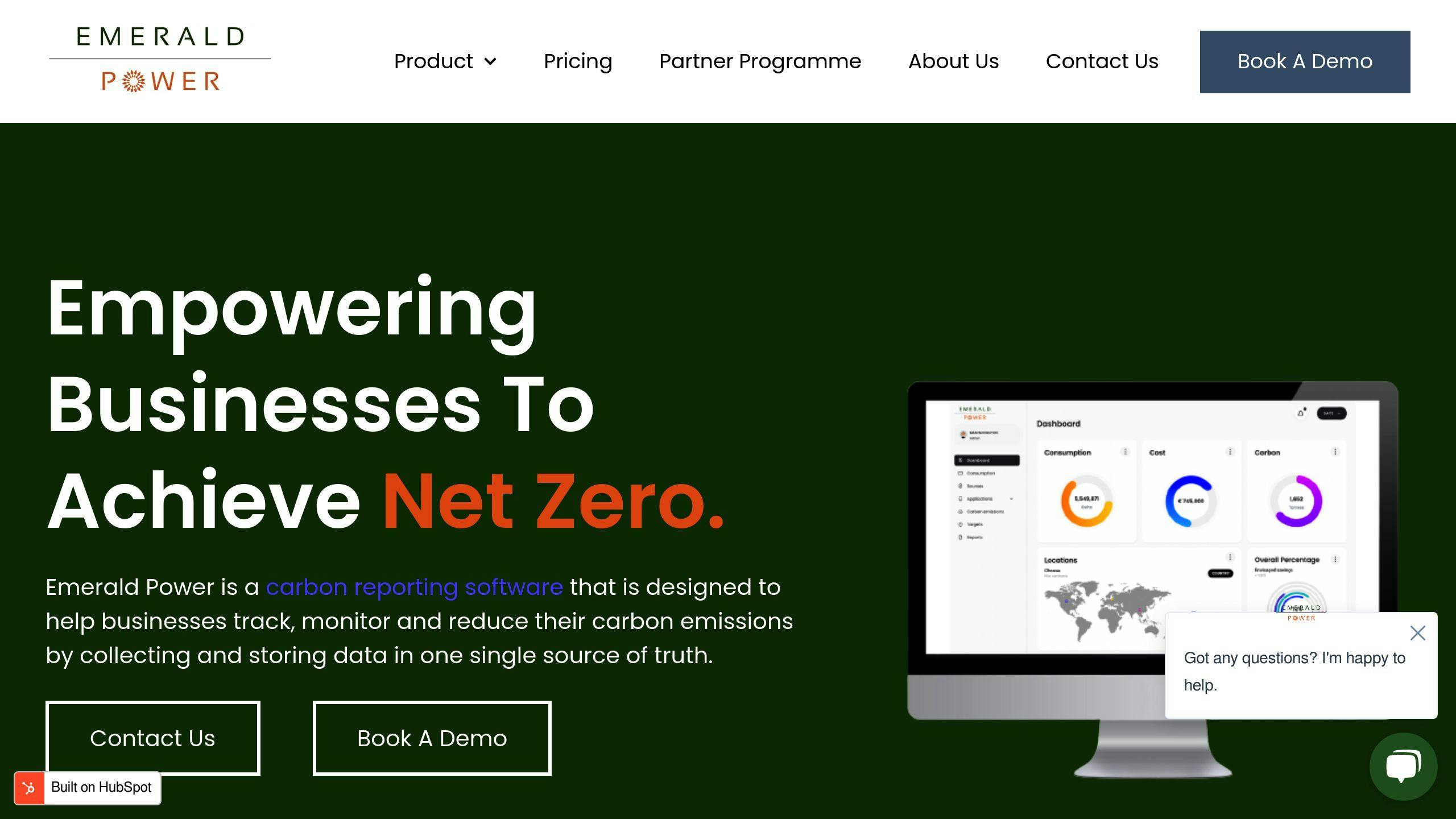How Investments Impact Scope 3 Emissions
Investments are a major driver of Scope 3 emissions, which include indirect greenhouse gas emissions across a company’s value chain. These emissions often make up the largest share of a business's carbon footprint. Managing financed emissions is critical to reducing risks like stranded assets, regulatory penalties, and reputational damage.
Key Takeaways:
-
Scope 3 emissions: Indirect emissions from activities like supply chains, product use, and financial investments.
-
Financed emissions: Investments in companies or projects contribute to emissions that must be accounted for proportionally.
-
Risks: Unmanaged emissions lead to financial, regulatory, and reputational challenges.
-
Solutions: Carbon accounting tools, internal carbon pricing, and strong supplier partnerships help track and reduce emissions.
By prioritizing accurate data, aligning investments with climate goals, and leveraging technology, businesses can better manage their Scope 3 emissions and reduce their carbon footprint.
Factors Driving Scope 3 Emissions from Investments
Influence of Supply Chain and Portfolio Decisions
Choices in supply chain management and portfolio composition play a key role in shaping Scope 3 emissions and financial risks. For instance, by 2030, carbon liabilities in sectors like manufacturing and retail could exceed $335 billion, assuming a carbon price of $75 [2]. Companies that actively collaborate with suppliers on climate-related goals tend to manage emissions more effectively. This highlights the importance of strong supplier relationships in controlling financed emissions.
Leveraging Internal Carbon Pricing for Smarter Investments
Internal carbon pricing is a practical tool for aligning investments with climate goals. By assigning a monetary value to carbon emissions, businesses can better assess opportunities and prioritize climate-friendly investments. Organisations using internal carbon pricing are four times more likely to develop transition plans aligned with the 1.5°C target, including specific Scope 3 goals [2].
Difficulties in Measuring Financed Emissions
Tracking financed emissions is no easy task, but the GHG Protocol provides two main approaches:
|
Methodology |
Description |
Best For |
|---|---|---|
|
Investment-Specific Method |
Relies on detailed investment data for calculations |
In-depth portfolio analysis |
|
Average-Data Method |
Uses industry averages for emissions estimates |
Broad-level assessments |
These methods are especially useful for businesses managing complex investment portfolios. However, gathering accurate data remains a challenge, particularly for mid-sized companies that may lack advanced tracking systems or full visibility into their value chains. To tackle these issues, businesses need effective tools and frameworks that simplify emissions tracking while adhering to GHG Protocol guidelines.
Solutions for Managing Scope 3 Emissions from Investments
Using Carbon Accounting Software for Scope 3 Emissions
Carbon accounting software simplifies emissions tracking by automating data collection and providing real-time insights. With features like instant dashboards, businesses can monitor their progress and make timely adjustments to their strategies.
|
Feature |
Benefit |
Impact on Emissions Management |
|---|---|---|
|
Automated Data Collection & Real-time Monitoring |
Cuts down manual work and offers instant insights |
Enhances tracking and quick decision-making |
|
Standardized Reporting |
Aligns with compliance protocols |
Ensures uniform reporting across investments |
|
Integration Capabilities |
Works with existing systems |
Enables thorough data gathering |
While these tools make managing emissions easier, it’s crucial to align them with established frameworks like the GHG Protocol to ensure accurate and reliable reporting.
GHG Protocol Guidelines for Investments

The GHG Protocol provides a clear framework for measuring and reporting financed emissions, specifically under Category 15: Investments. Companies with complex portfolios should focus on gathering data for Scope 1, Scope 2, and key Scope 3 emissions from their investees.
For mid-sized businesses, tools like Emerald Power can make applying these guidelines more manageable and improve their ability to oversee emissions effectively.
How Emerald Power Supports Mid-Market Businesses

Emerald Power helps mid-sized companies tackle challenges like limited resources and regulatory hurdles. It offers AI-driven automation, real-time data collection, custom APIs, and advanced reporting to simplify emissions tracking and management.
The platform also includes benchmarking and target-setting tools, allowing businesses to measure their progress against industry benchmarks and their own reduction goals. This is especially useful for mid-market firms that may not have the same resources as larger corporations but still need to address their financed emissions.
Research backs this up: companies using robust emissions tracking systems are better equipped to manage carbon risks. A report by BCG and CDP found that such organizations are "4.8 times more likely to have a 1.5°C-aligned transition plan with a Scope 3 target" [2].
Steps to Reduce Scope 3 Emissions from Investments
Collaborating with Suppliers and Financial Partners
Working closely with suppliers and financial partners plays a major role in addressing financed emissions. Businesses should focus on creating systems for standardised reporting, setting mutual goals, and using shared monitoring tools to make progress.
|
Partnership Area |
Key Actions |
Expected Outcomes |
|---|---|---|
|
Data Sharing |
Develop standardized reporting methods |
Better accuracy in emissions tracking |
|
Goal Alignment |
Define shared emissions targets |
Unified sustainability efforts |
|
Technology Integration |
Use shared monitoring tools |
Real-time insights into emissions |
|
Knowledge Transfer |
Host regular workshops on sustainability |
Improved partner expertise |
Strong partnerships are essential, but everything hinges on having accurate and reliable data.
Improving Emissions Data Accuracy
Accurate data is critical, especially for businesses managing diverse investment portfolios. Advanced data management tools help ensure consistency and reliability, even when traditional methods fall short. These tools also make it easier to meet reporting standards for various types of investments.
With reliable data, businesses can create clear, actionable strategies to reduce their financed emissions.
Setting Measurable Emissions Reduction Goals
Defining specific, time-bound goals and using internal carbon pricing can help businesses focus on low-carbon investments while tracking their progress. In fact, companies that implement internal carbon pricing are 4 times more likely to develop a 1.5°C-aligned transition plan with a Scope 3 target [2].
For mid-sized businesses, automated tools can simplify this process. Carbon accounting platforms provide the ability to:
-
Track emissions in real-time
-
Adjust strategies based on performance data
-
Stay compliant with changing regulations
-
Create standardised reports for stakeholders
Conclusion: Making Investments Part of the Solution
Key Actions and Trends in Managing Financed Emissions
Tackling Scope 3 emissions tied to investments calls for a focused approach grounded in reliable data and strong partnerships. These emissions carry major financial risks - if left unaddressed, they could result in carbon liabilities surpassing $335 billion by 2030 across industries like manufacturing, retail, and materials [2].
To manage these emissions effectively, businesses should prioritise accurate data collection, adopt internal carbon pricing, collaborate closely with suppliers, and commit to science-based targets. The payoff is clear: companies with climate-focused boards are 4.8 times more likely to implement robust transition plans that align with 1.5°C climate goals [2].
However, challenges such as portfolio complexity and data quality still pose hurdles. To address these, businesses are leveraging emerging trends. Technology is playing a crucial role, with carbon accounting platforms now offering automated tools for data collection and emissions reporting. These tools simplify the process of tracking and managing emissions tied to investments.
Regulatory changes are also reshaping the landscape. Organizations like the SEC are rolling out standardized reporting requirements, underscoring the need for effective emissions management strategies [3]. For mid-sized businesses, success hinges on selecting the right tools and partners. Modern carbon accounting software not only helps in tracking and reducing emissions but also ensures compliance with evolving regulations like CSRD.
The Partnership for Carbon Accounting Financials (PCAF) for Financed Emissions

FAQs
For businesses addressing Scope 3 financed emissions, it’s crucial to grasp the basics of calculation and categorisation. Below are some commonly asked questions and their answers.
How are financed emissions calculated?
Financed emissions are determined by using an attribution factor, which is calculated as the investment amount divided by the total equity and debt. This factor is then multiplied by the investee’s Scope 1 and 2 emissions. For infrastructure projects, businesses also need to estimate the total emissions over the project’s lifespan. This is done by multiplying the annual emissions by the project’s lifespan and the proportional cost share of the project [1].
The process typically involves:
-
Gathering Scope 1 and 2 emissions data directly from investee companies.
-
Calculating the attribution factor.
-
Applying the attribution factor to the emissions data.
What does the Scope 3 investment category include?
Scope 3, Category 15, covers emissions from financial investments such as equity, debt, project financing, joint ventures, and subsidiaries. These emissions pose significant risks, with unmanaged liabilities potentially reaching over $335 billion by 2030 [2]. According to the GHG Protocol, a widely recognised greenhouse gas accounting standard, businesses must collect data on Scope 1, 2, and relevant Scope 3 emissions from their investees when these emissions are material to the overall profile [1].
Grasping these concepts helps businesses align investments with sustainability goals while managing potential financial risks effectively.
